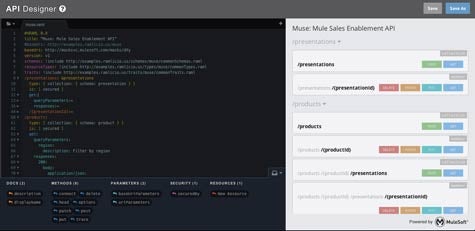One of the things that holds back the adoption of application programming interfaces (APIs) is that they can be difficult to manage. MuleSoft wants to make that whole process simpler via an upgrade to its Anypoint Platform for APIs, which includes API portal and API management software designed to make the deployment and management of APIs more accessible to the average IT organization.
MuleSoft CTO Uri Sarid says one of the biggest hurdles when it comes to expanding the API economy is that most organizations don’t have the skills needed to develop and manage low level APIs. The MuleSoft Anypoint Platform for APIs, says Sarid, makes use of a new RESTful API Modeling Language (RAML) that MuleSoft backs to help IT organizations manage APIs at a higher level of abstraction.
Anypoint API Portal allows developers to design, test and discover APIs in a collaborative Web-based environment. Anypoint API Manager governs the lifecycle of APIs via a central repository, including policies for rate limiting or throttling, contract key management, as well as monitoring and providing analytics for APIs used in production.
Mule Studio with APIkit is an Eclipse-based graphical design environment that can be used to implement any API design expressed in a RAML file and connect it to backend applications and services.
The end goal, says Sarid, is to create a framework that simplifies API creation, and also ensures that those APIs don’t wind up being used for purposes they were never intended to support.
APIs are being rapidly embraced inside and out of the IT department to create new digital channels through which information is shared and transactions ultimately are processed. As such, they are fundamental components of becoming a truly digital business. The paradox that many organizations face today is that not only is it difficult to create those APIs, but managing those APIs over time winds up introducing a level of complexity most organizations are not able to absorb.
As is often the case, however, the API phenomenon and the digital economy as a whole are moving faster than most internal IT organizations can keep pace with. Unless they put mechanisms in place to manage APIs, chances are they will soon find their organizations left out of what promises to be a thriving digital economy.




